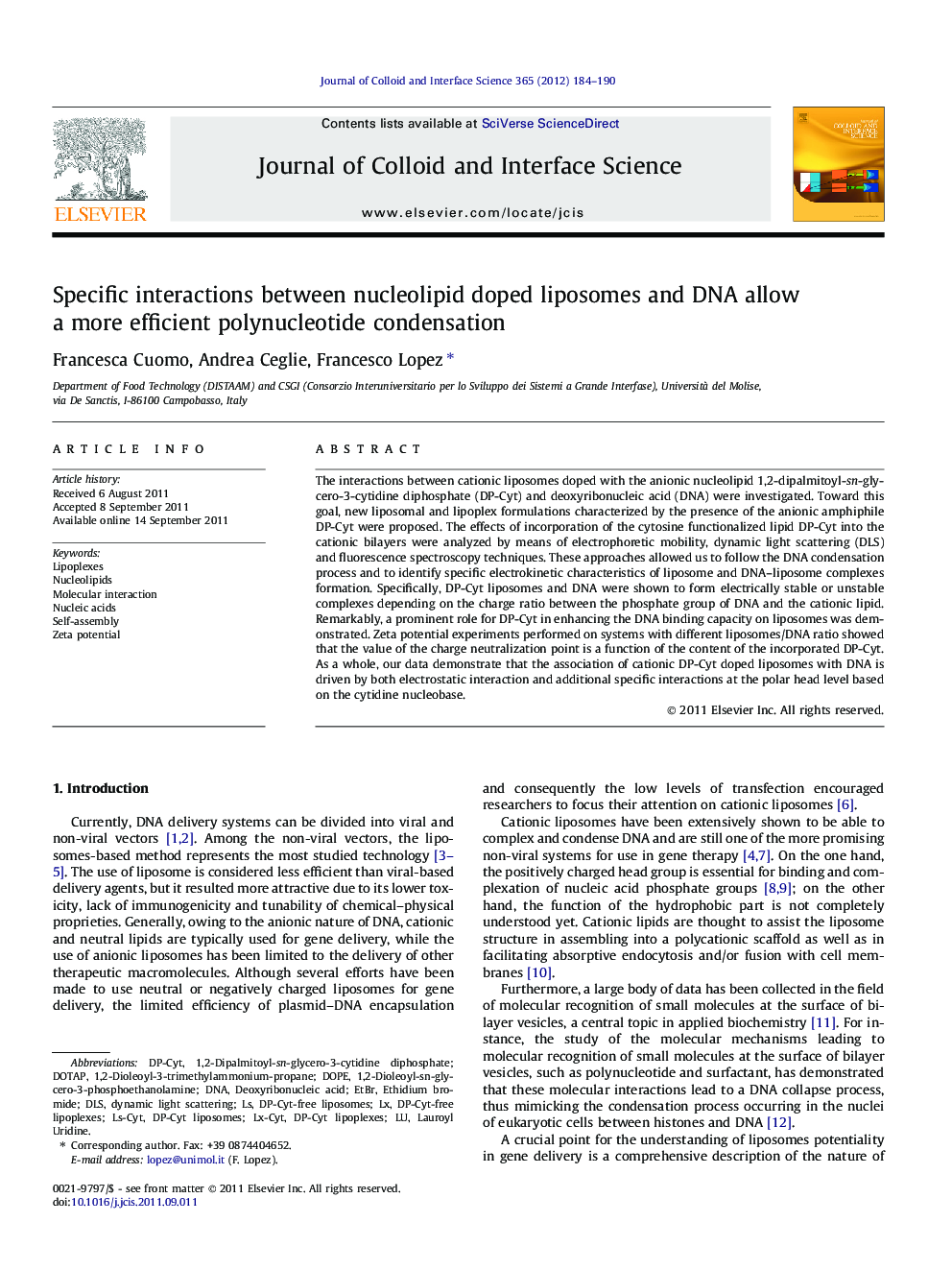| Article ID | Journal | Published Year | Pages | File Type |
|---|---|---|---|---|
| 608467 | Journal of Colloid and Interface Science | 2012 | 7 Pages |
The interactions between cationic liposomes doped with the anionic nucleolipid 1,2-dipalmitoyl-sn-glycero-3-cytidine diphosphate (DP-Cyt) and deoxyribonucleic acid (DNA) were investigated. Toward this goal, new liposomal and lipoplex formulations characterized by the presence of the anionic amphiphile DP-Cyt were proposed. The effects of incorporation of the cytosine functionalized lipid DP-Cyt into the cationic bilayers were analyzed by means of electrophoretic mobility, dynamic light scattering (DLS) and fluorescence spectroscopy techniques. These approaches allowed us to follow the DNA condensation process and to identify specific electrokinetic characteristics of liposome and DNA–liposome complexes formation. Specifically, DP-Cyt liposomes and DNA were shown to form electrically stable or unstable complexes depending on the charge ratio between the phosphate group of DNA and the cationic lipid. Remarkably, a prominent role for DP-Cyt in enhancing the DNA binding capacity on liposomes was demonstrated. Zeta potential experiments performed on systems with different liposomes/DNA ratio showed that the value of the charge neutralization point is a function of the content of the incorporated DP-Cyt. As a whole, our data demonstrate that the association of cationic DP-Cyt doped liposomes with DNA is driven by both electrostatic interaction and additional specific interactions at the polar head level based on the cytidine nucleobase.
Graphical abstractComparison between non-doped and DP-Cyt doped liposomes on the DNA condensation ability. The higher amount of DNA is absorbable on Lx-Cyt system, notwithstanding the lower cationic lipid content with respect to Lx, owing to the occurrence of hydrophobic forces between the nucleobase and the DNA.Figure optionsDownload full-size imageDownload high-quality image (57 K)Download as PowerPoint slideHighlights► Nucleolipid liposomes/DNA association is driven by electrostatic and specific interactions. ► The nucleolipid DP-Cyt enhances the DNA binding capacity of liposomes. ► The new lipoplexes represent an alternative to the existing systems for DNA delivery.
